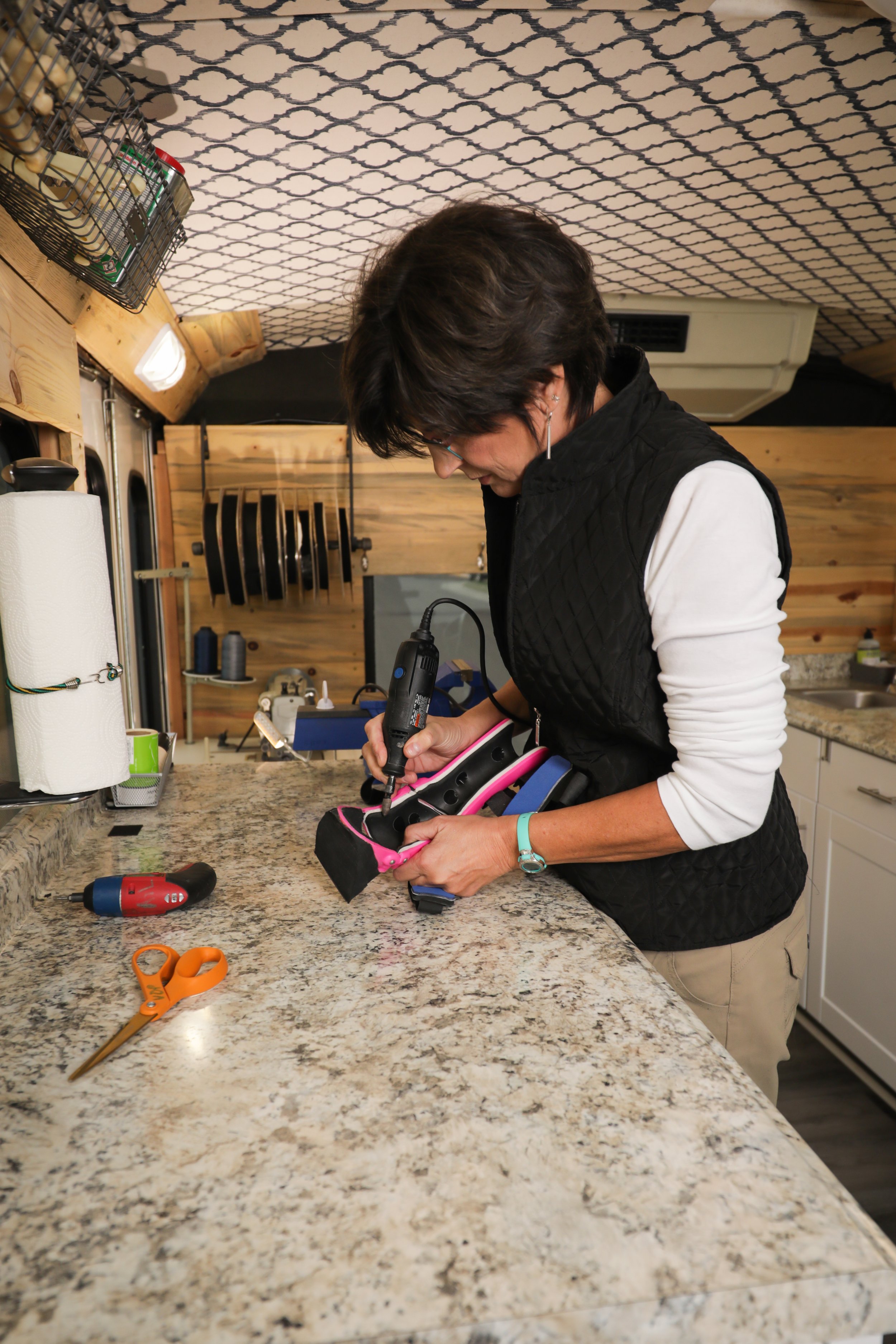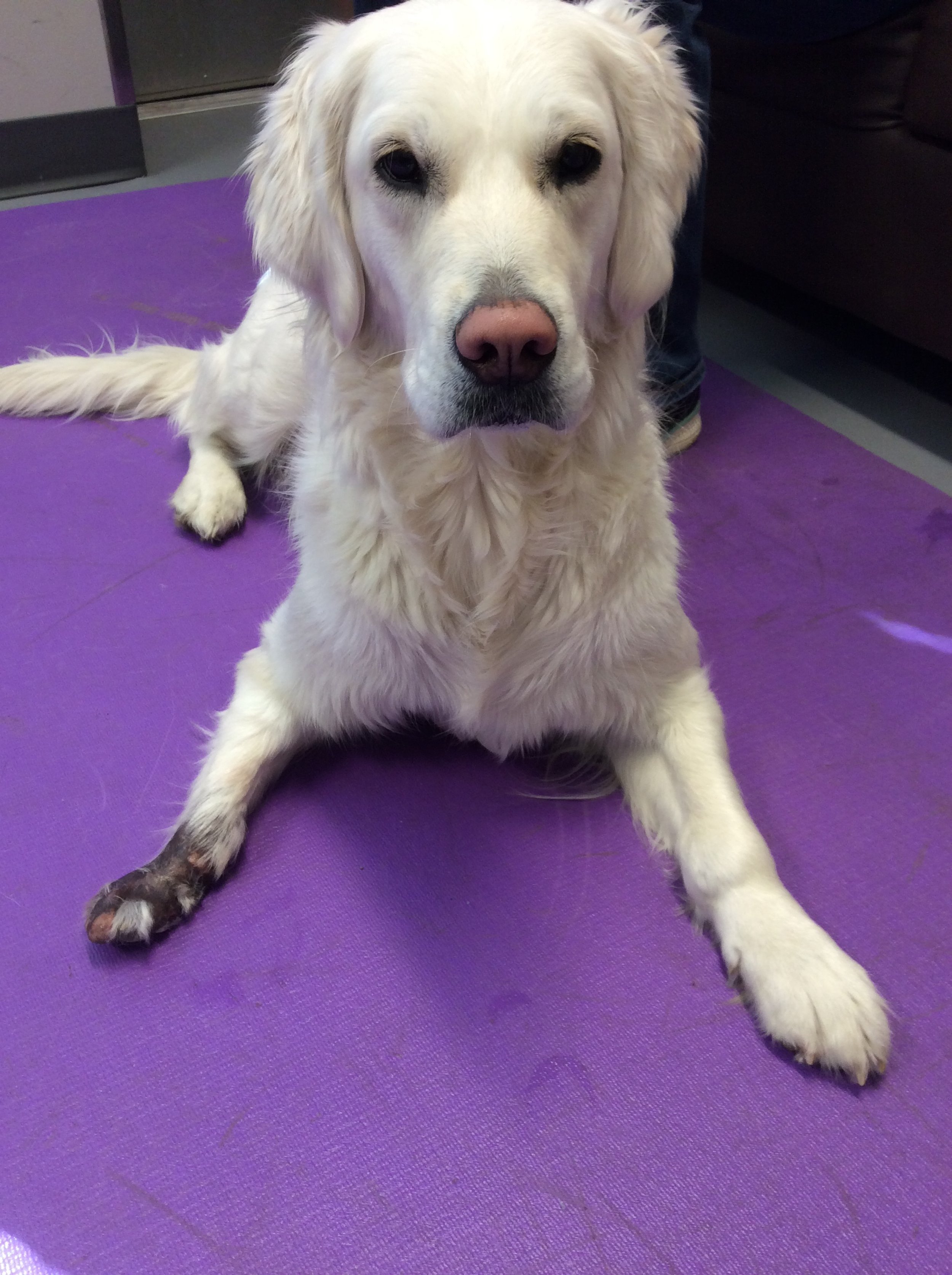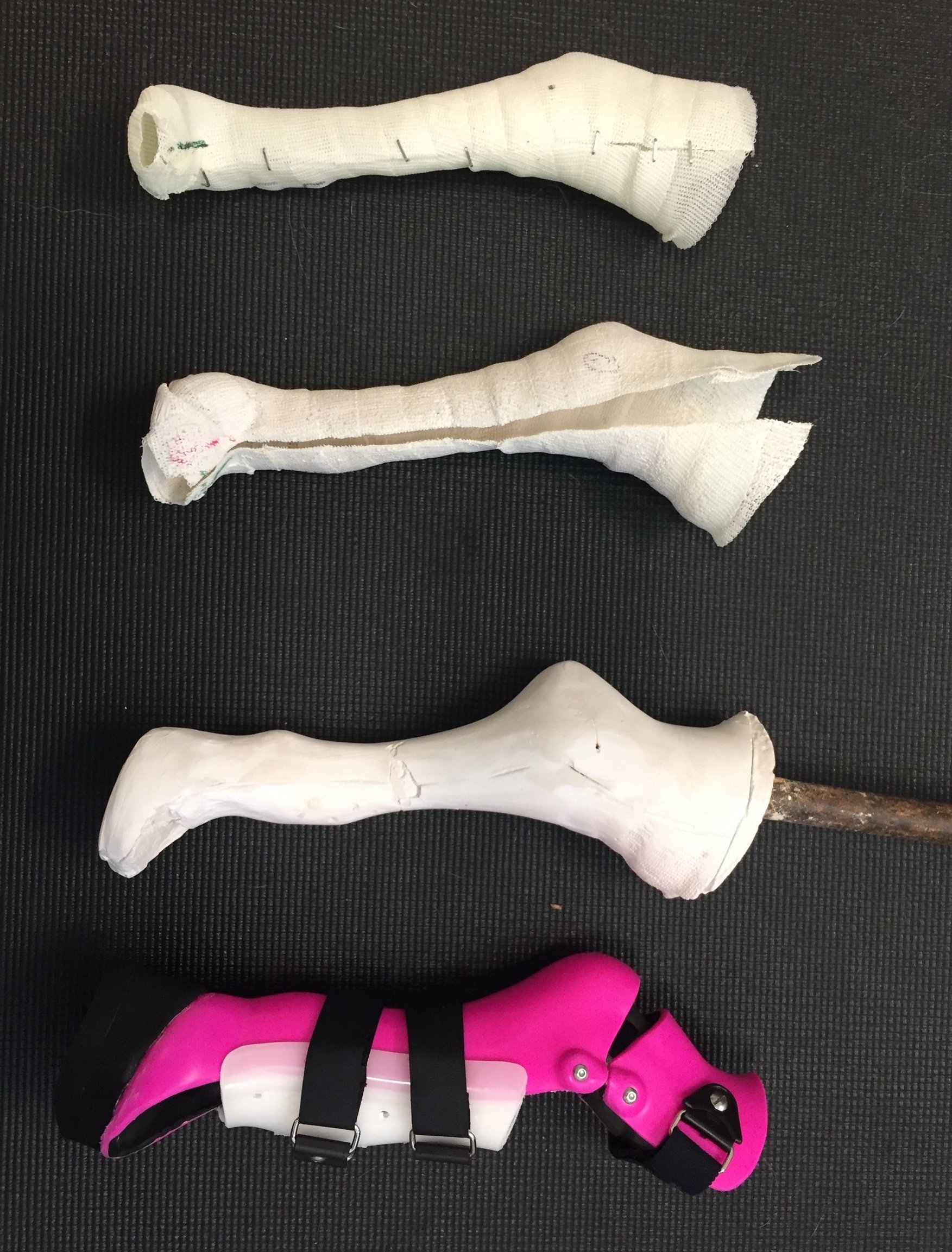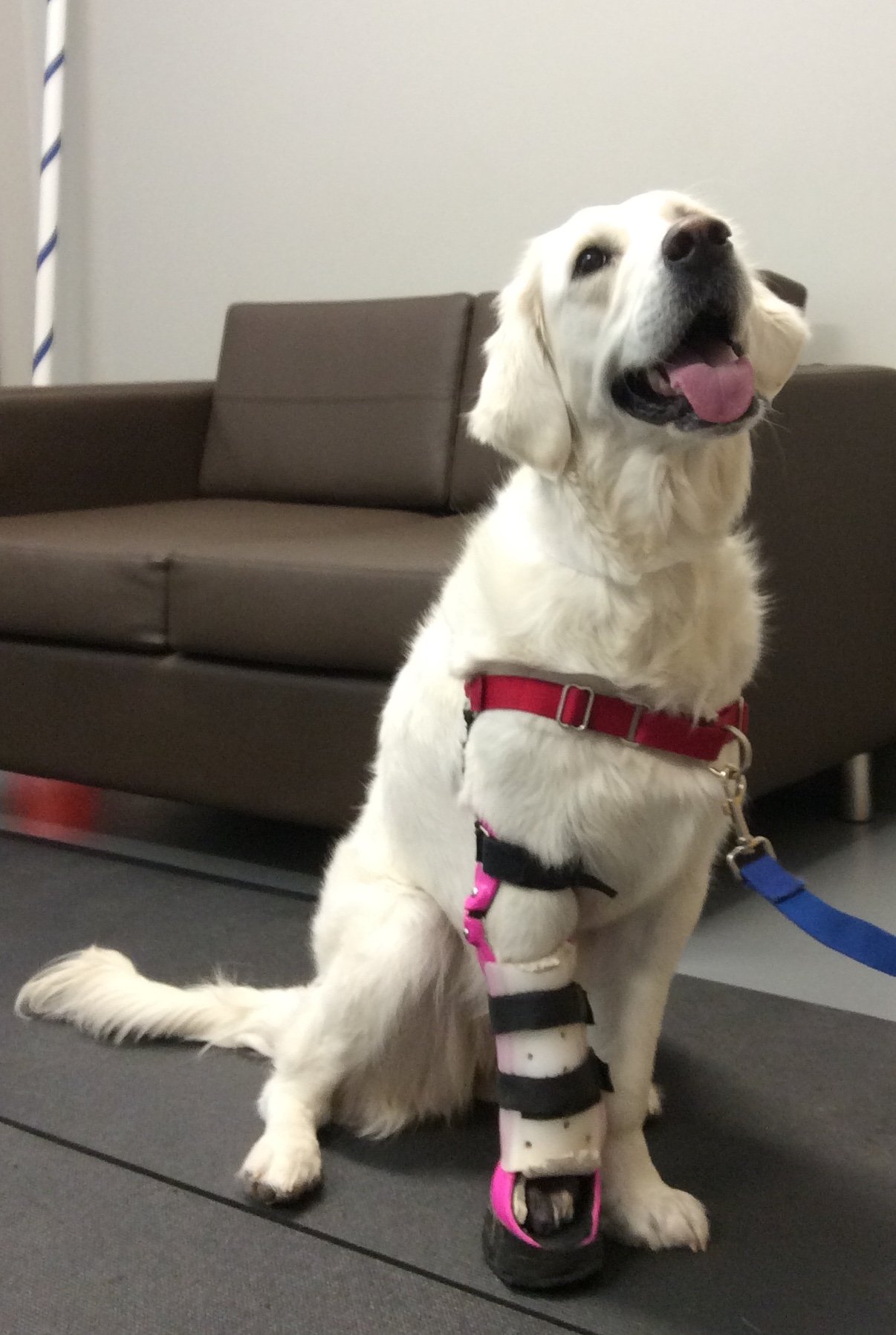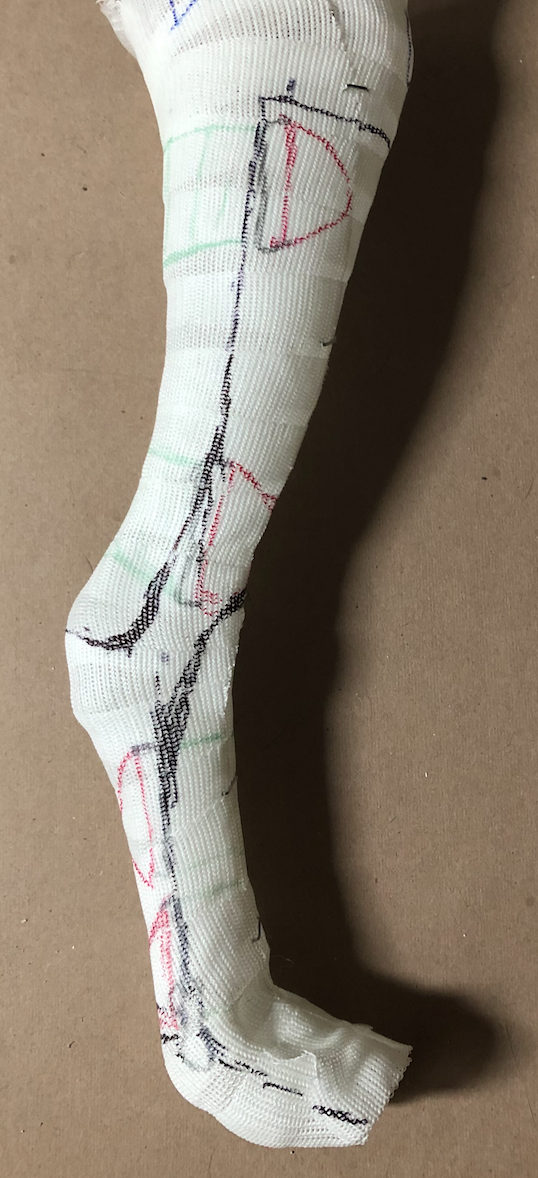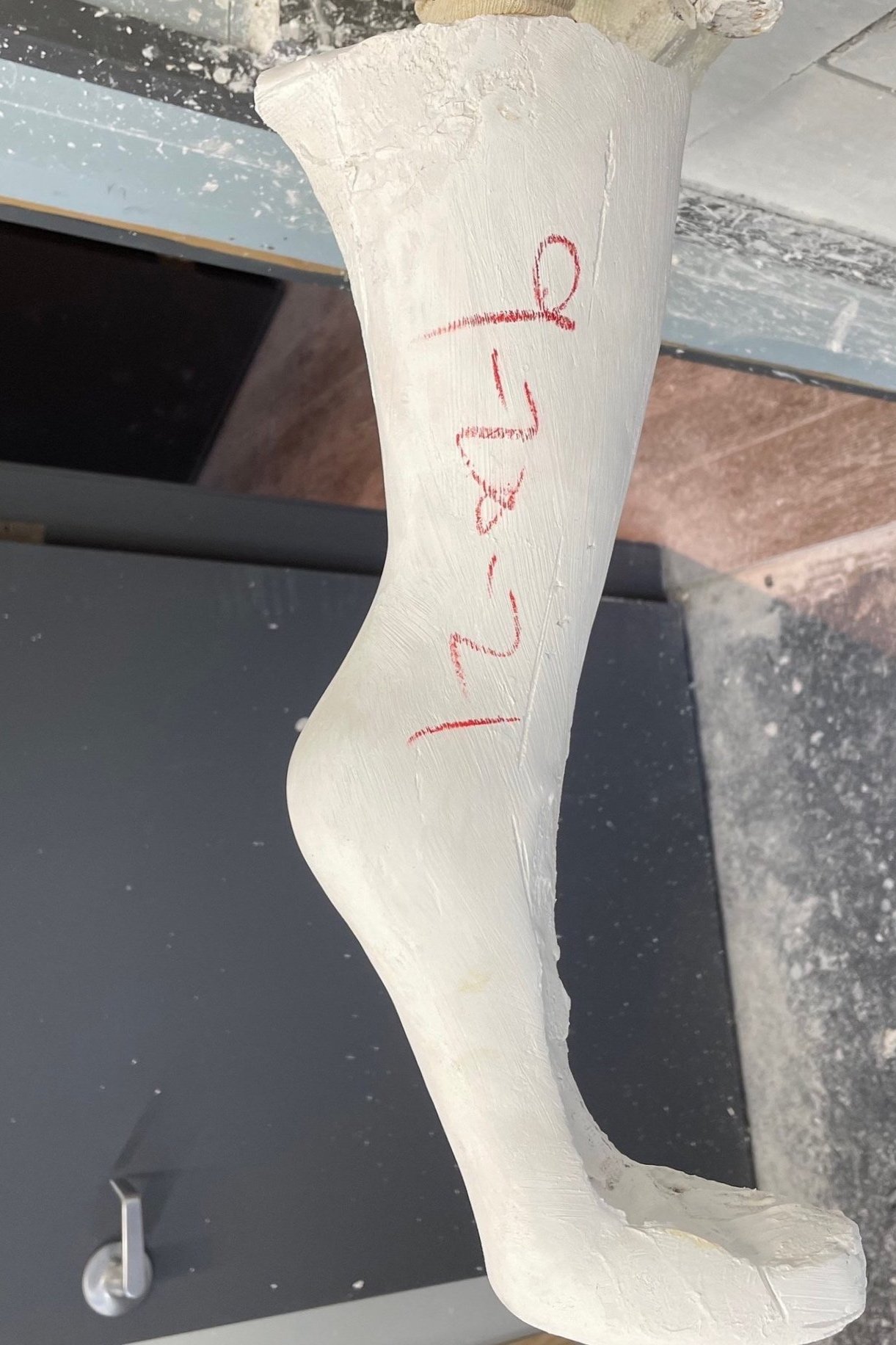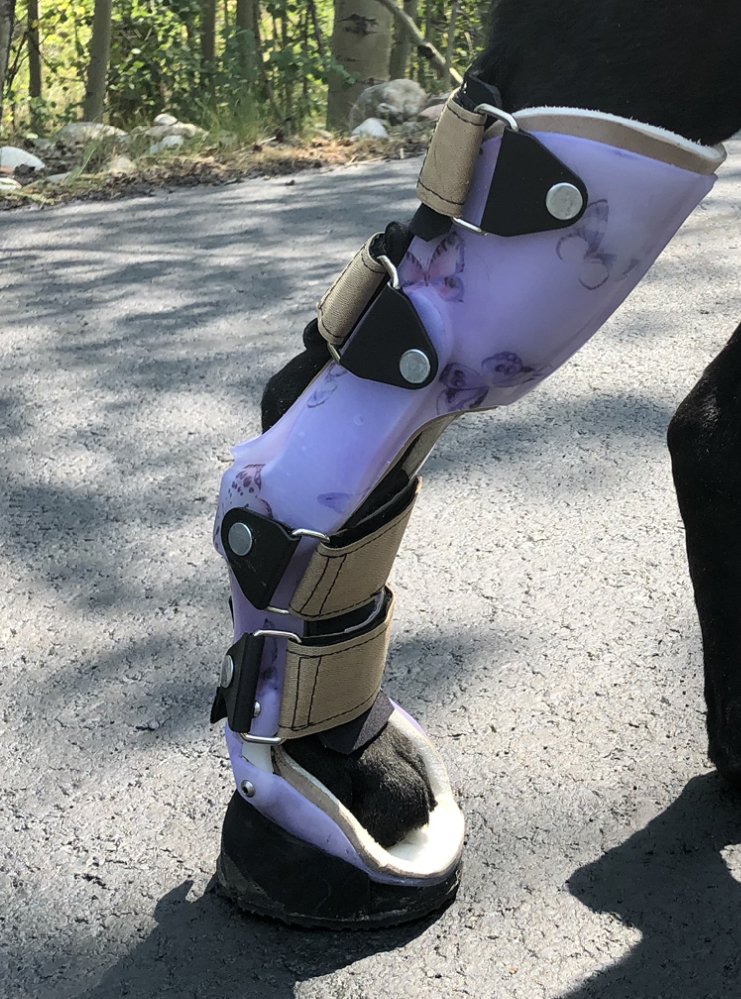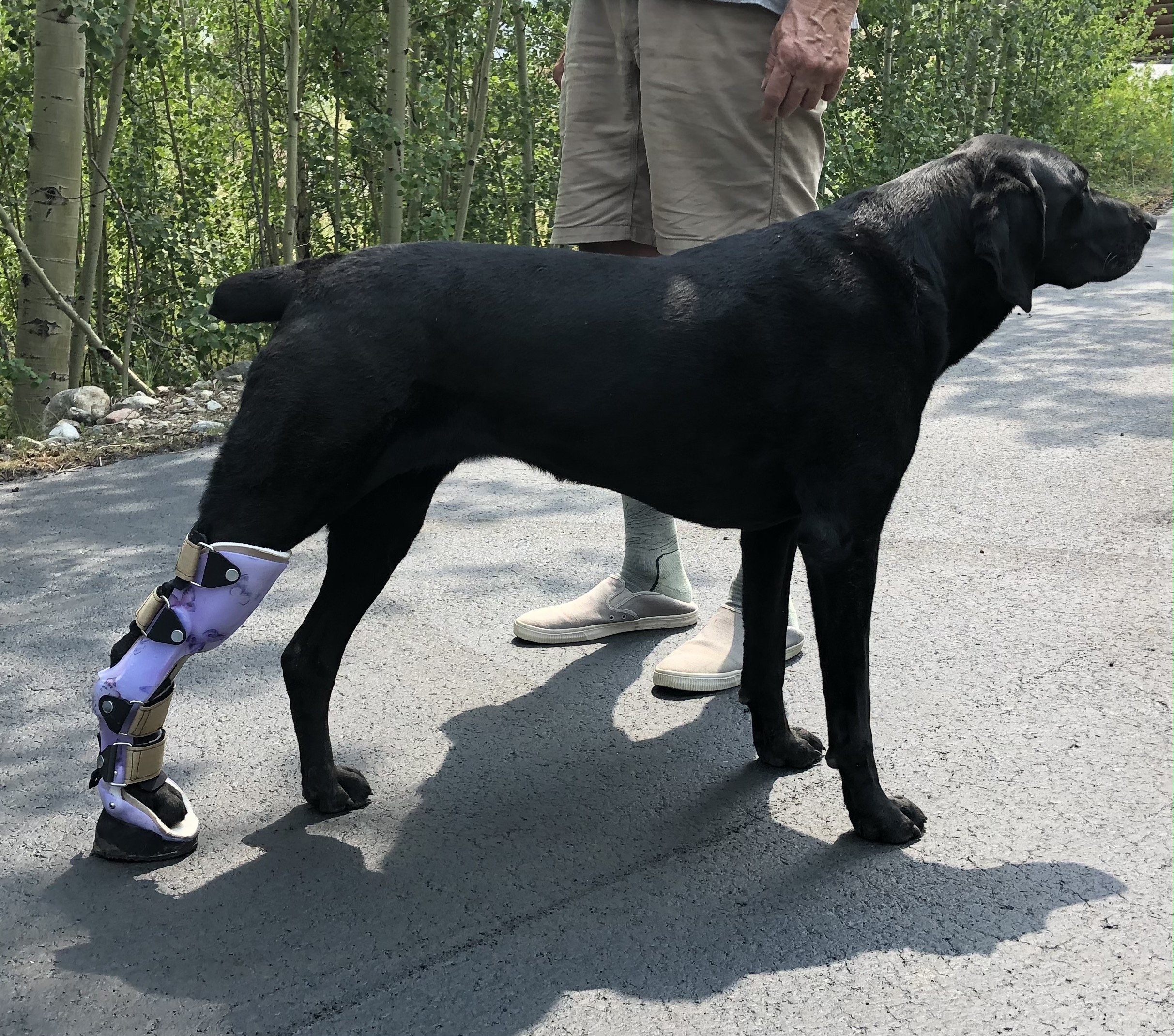Orthotics and Prosthetics (V-OP)
What is Veterinary Orthotics and Prosthetics (V-OP)?
Essentially, V-OP is the use of braces (orthotics) and prosthetic legs for injured and disabled dogs. But there’s more to consider….
The use of veterinary orthotic and prosthetic devices has been an emerging treatment tool for more than 15 years. These are medical devices attached to the body to support, align, position, immobilize or correct injury or deformity. They have been used in human medicine for centuries. The practice of manufacturing and fitting is called O and P (orthotics and prosthetics). This history forms the basis of veterinary O and P or V-OP. A quick search of the internet reveals a plethora of companies and devices available for sale.
Dr. Mich cautions clients to seek professional assistance before utilizing one of these V-OP devices. Not all of these products are effective and some can harm or delay appropriate treatment. There is no oversight or regulation at this time. It’s important to start with a proper diagnosis and then thoroughly understand all treatment options. In general, if it seems like a quick and inexpensive fix for a mobility problem, it probably is not effective and could be harmful.
Dr. Mich started exploring V-OP as a pain and mobility management tool with her, own dog, Griffin, in 2004. In order to see first-hand the process of designing and fabricating devices Dr. Mich co-owned a fabrication facility for 6 years. From Griffin and a number of early cases she learned a valuable lesson about when to use and not use these devices. It is true that a device can be made for just about any patient, but that does not mean it should, that it is helpful and more importantly, that it is not harmful.
Her training in physiology, sports medicine and physical rehabilitation informs her knowledge of 4-legged patient biomechanics as well as medical and orthopedic conditions that can be managed with these devices. Her unique and varied perspective allows Dr. Mich to critically assess each patient to determine if V-OP is the right choice. She is a leader in advocating for safe and appropriate use of these devices. Dr. Mich is an internationally known V-OP expert having written and spoken widely on the subject.
When properly prescribed, designed, fitted and managed, V-OP devices can restore mobility and reduce discomfort for our beloved companions. Such devices include prosthetic limbs to replace missing limb segments and orthotic devices to support patients post-operatively or when surgery is not needed or will not be performed. Some injuries or birth defects can’t be managed with surgery alone or at all. Some surgeries are not successful and a device can prevent amputation of the injured limb. Creative solutions to mobility problems are available for your companion. The keys are the right solution + continuing support for you and your companion.
When treating V-OP patients evaluation, prescription, design and customized fitting are all done on site in the Canine Mobility Medicine rolling clinic and V-OP lab. There is no need to ship the device to a fabrication lab for adjustments.
Is a Custom Orthosis Right for You and Your Canine Companion?
An orthosis (brace) is used to provide structural support for a limb or limb segment when the body cannot do so itself due to injury or birth deformity. An orthosis can be a permanent solution or an additional component in a complete surgical or non surgical treatment plan.
Orthoses can be a generic off-the-shelf device or a custom device, which is made to fit your dog’s exact shape and therapeutic requirements. The latter provides better fit and function compared to a device manufactured for general use for a “small, medium, or large dog.” Dogs come in too many sizes and shapes for generic off-the-shelf devices to fit properly and the risk of new injury or failure to manage the original injury is very high.
With a custom device, a specific and individual prescription guides device design. This is based on a thorough biomechanical assessment of your dog’s entire body. It’s important to know if a device is the RIGHT treatment for your dog. Just because a device can be strapped onto a dog doesn’t mean it should be.
Although ALL devices have the potential to cause skin irritation compared to an off the shelf device, a custom device significantly minimizes this by starting with a mold of your dog’s limb in precisely the alignment needed for treatment. Additionally, after device fabrication Dr. Mich performs further customization of the device on site to provide the best fit possible. There is no need to mail the device to the fabricator for adjustment. She will follow up with adjustments as needed to manage pressure or friction issues should they arise as well as to modify the device as your dog’s case progresses. This level of care is not possible with an off the shelf device or even a device ordered from an online custom fabricator. Here are a few more details:
Prescription and Fabrication: An orthosis project starts with a prescription just as any treatment for a medical condition. A fiberglass mold is taken of your dog’s leg; then Dr. Mich designs the device needed by sketching on the mold. The mold and design prescription are sent to a V-OP fabricator (veterinary orthotics and prosthetics). Dr. Mich works with only one fabricator who is highly experienced in fabricating to prescription specifically for dogs. This allows for the highest degree of professional collaboration and best results.
Delivery and fitting: Most devices take 2-3 weeks for delivery. On fitting day Dr. Mich will assess for proper fit and function and make initial customization adjustments as needed.
Adjustments are EXPECTED in all cases. Close adherence to the prescribed wearing schedule and attention to your dog’s leg, monitoring for any irritation, are important.
Activity and wearing schedule: Many fitting issues can be directly related to too much initial activity. Activity restrictions are particularly important in the initial days and week after any fitting or new adjustment. Just like getting a new pair of hiking boots or ski boots, taking it easy at first allows for breaking in.
Post splint or cast: Dogs in a cast or splint prior to device fitting may experience significant swelling in the first 48 hours after removal as a normal biological response. This means that careful attention to the limb in the device is needed to manage post removal swelling and avoid discomfort and skin irritation from pressure. Instructions are provided in these cases.
Experience: Dr. Mich has been prescribing and adjusting canine orthotic and prosthetic devices for more than 12 years. Having previously co-owned a fabrication facility and Veterinary Orthotics and Prosthetics clinic she has a unique level of experience. Dr. Mich writes and teaches V-OP nationally and internationally.
Collaboration is key: Dr. Mich is passionate about collaboration and works closely with your family veterinarian, veterinary surgeon, and rehabilitation professionals to help your dog “get back in the game!”
Non- refundable: Because each device is custom and made for your dog, returns and refunds are not possible. Therefore, be certain this is the right plan for you and your dog by discussing all questions with Dr. Mich in advance.
Color selection: Devices are made from black thermoplastic. If you would like a specific design go to www.friddles.com and look for transfer paper or go to: https://friddles.com/collections/friddles-coloring-paper. Provide Dr. Mich with your top 3 choices and we will be able to provide one of these.
Meet Rudy:
Read more about Rudy’s story here
Meet Louise:






